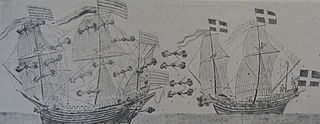 W
WThis battle in the Northern Seven Years' War took place on 7 July 1565 and was a decisive victory for a Swedish fleet of 49 ships, under Klas Horn, over a combined Danish and Lübecker fleet of 36 ships, under Otte Rud.
 W
WThe Battle of Älgarås took place at the royal estate of Älgarås in northernmost Västergötland in November 1205 between the House of Sverker and the House of Eric who were fighting for the Swedish crown. The four sons of the former king Canute I fell out with King Sverker II in about 1204 and sought support among the Birkebeiner party in Norway. The Birkebeiner leader Jarl Håkon Galen married their cousin in January 1205 and promoted their claim. The brothers, of whom only Eric Knutsson is known by name, returned to Sweden in the same year. To which extent they had Norwegian military backing is unclear.
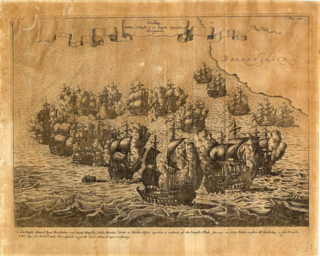 W
WThe Battle of Bornholm (1563) was the first naval battle of the Northern Seven Years' War (1563–70).
 W
WThe Battle of Chemnitz took place near the town of Chemnitz, in what is now eastern Germany, during the Thirty Years' War. Swedish forces under Johan Banér inflicted a crushing defeat on Rodolfo Giovanni Marazzino who commanded the Saxons and an Imperial detachment.
 W
WThe Battle of Gemauerthof was a battle in the Great Northern War, fought south of Riga near Jelgava, in present-day Latvia in July 1705. The Swedish forces under Adam Ludwig Lewenhaupt fought a Russian army under Boris Sheremetyev. The Swedes, exhausted after forced marching, went to camp and were cooking supper when the news came of a large Russian army with 16 artillery pieces nearby. The Swedes, who themselves had 17 artillery pieces quickly deployed into battle formation and, encouraged by General Lewenhaupt, attacked the Russians. Although suffering severe setbacks on their right flank, the assault continued. On the left, the Swedish cavalry charged and broke the Russians. The infantry in the centre fired carefully at point-blank range and then charged, pushing their foes back in disorder. The battle ended in a confused melee, which was eventually won by the Swedes. The Russian cavalry withdrew while the infantry was destroyed by a combined-arms assault leaving 5,000 men dead, wounded or captured. The Swedes were victorious, but the victory was only symbolic. In August, the Russians conquered Courland.
 W
WThe Action of 22 July 1713 was a naval battle between Sweden and the Tsardom of Russia which took place on 22 July 1713 near the shallows of Kalbådagrund. It was an indecisive engagement, part of the Great Northern War.
 W
WThe Battle of Jakobstadt, was a battle fought in the Great Northern War. It took place on 25 July 1704 (O.S.) / 26 July 1704 / 5 August 1704 (N.S.) between a Swedish army under Adam Ludwig Lewenhaupt and a combined Lithuanian/Russian force under Great Hetman Michał Serwacy Wiśniowiecki at the town of Jēkabpils in the Duchy of Courland and Semigallia. The Swedes were victorious.
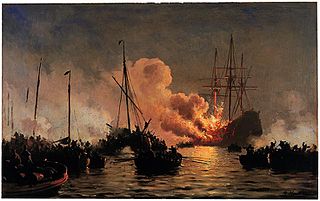 W
WThis indecisive battle took place on 4 October 1710, during the Great Northern War, in Køge Bay, just south of Copenhagen. Denmark had 26 ships of the line and 5 frigates with 1808 guns, and Sweden had 21 ships of the line and several frigates with 1512 guns. The Danish ship Dannebroge exploded and of the 550-man crew only 9 survived. The Swedish ships Tre Kronor and Prinsessan Ulrika Eleonora ran aground. Because of the weather the battle could not continue. However, the Swedish fleet managed to sink and capture a Danish convoy of transport ships that were supposed to embark a Russian invasion force in Danzig. The action in Køge Bugt checked those Russian invasion plans of Sweden.
 W
WThe Battle of Kvistrum or the Battle of Kvistrum bridge took place on September 29, 1788 during the Theatre War, a phase of the Russo-Swedish War (1788–90), between Sweden and the Denmark–Norway. The Swedes lost the battle and had five killed and the rest captured with 60 wounded, the Danes had suffered 5 killed and 16 wounded.
 W
WThe Battle of Molyatichi, also known as the Battle of Dobroye, took place on August 31, 1708 at Molyatichi during the Great Northern War. The Russian army of Peter the Great under the command of Mikhail Golitsyn successfully attacked the avatgarde of the Swedish Army of Charles XII under Carl Gustaf Roos. The fighting occurred in the swamp between the rivers Belaya Natopa and Chernaya Natopa. The Swedish forces were surprised by the Russian attack in the morning fog and withdrew to the main Swedish army. The swampy landscape prevented the Russian cavalry to cut off the Swedish way of retreat. Since the attack of the main body of the Swedish army was not part of the Russian intentions at that moment, the Russians pulled back. The Swede chronists noted the grown fighting skills of the Russians. Together with the following Battle of Lesnaya, the battle of Malatitze caused Charles XII to abort his advance to Central Russia.
 W
WThe Battle of Poznań was a battle that took place on August 9, 1704 in Poznań, Poland during the Great Northern War.
 W
WThe Battle of Werben was a battle of the Thirty Years' War, fought on July 22 (O.S.) or August 1, 1631 (N.S.), between the Swedish Empire and the Holy Roman Empire. The Swedes had 16,000 soldiers and were led by Gustavus Adolphus, while the Imperialists had 23,000 soldiers and were led by Field-Marshal Count Tilly. Tilly's troops attacked Gustavus' entrenchments in front of Werben (Elbe), but Swedish batteries and the cavalry under Wolf Heinrich von Baudissin forced them to retreat. The attack was renewed a few days later with a similar result, and Tilly then drew off his forces, having suffered a loss of 6,000 men.
 W
WThe Capture of Daugavgriva by Swedish forces in July 1608 occurred during the Polish–Swedish War (1600–1611).
 W
WThe Conquest of Stockholm was a battle in the Swedish War of Liberation that took place in Stockholm, Sweden on 17 June 1523. The Swedish forces had for a long time laid siege to Stockholm, which was the last Danish stronghold in Sweden. The city waited for reinforcement from Denmark, but none came. It was clear that negotiations must begin.
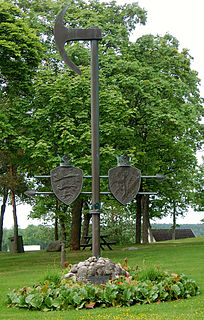 W
WThe Battle of Hova was fought in Hova, Sweden on 14 June 1275 between peasants commanded by King Valdemar of Sweden and Danish cavalry commanded by Duke Magnus and his brother Erik. The result was that Valdemar had to flee to Norway and Magnus became king of Sweden as Magnus III. It was a part of a series of conflicts between Magnus and his elder brother Valdemar.
 W
WThe Siege of Kolding was fought on December 25, 1658, between Sweden and the forces of the Polish–Lithuanian Commonwealth and Denmark–Norway. The Polish and Danish forces were led by Stefan Czarniecki. The Polish-Danish force won the battle.
 W
WThe Battle of Koporye took place on October 8, 1708 close to Koporye, in the Swedish Empire during the Ingrian campaign in the Great Northern War. A Swedish force consisting of 1,800 men under the command of generals Carl Gustaf Armfeldt and Anders Erik Ramsay attacked a numerically stronger enemy of between 2,000 and 3,000 Russian forces. The battle ended in a Swedish victory with about 600 killed Russians and only 70 dead for the Swedish force. After some further campaigning, the Swedish–Finland army under the command of Georg Lybecker decided to evacuate his troops, having failed with his objectives.
 W
WThe Battle of Osel Island took place on May 24, 1719 (O.S.), during the Great Northern War. It was fought near the island of Saaremaa (Ösel). It led to a victory for the Russian captain Naum Senyavin, whose forces captured three enemy vessels, sustaining as few as eighteen casualties. It was the first Russian naval victory which did not involve ramming or boarding actions.
 W
WPerevolochna was a former fortress and town in Polish-Lithuanian Commonwealth and Cossack Hetmanate, later a village in Poltava Oblast. Before establishing Kamianske Water Reservoir in 1960s, here also existed a river crossing. The settlement was situated at the bank of the Dnieper near the mouth of Vorskla River, where a ford across Dnieper enabled people to cross the river, hence its name. The crossing Perevolochna – Mishuryn Rih was also a key crossing during the battle of the Dnieper in October 1943.
 W
WThe Battle of Saladen was a battle that took place on 19 March 1703 near Saločiai, Lithuania during the Great Northern War. The Swedes won the battle.
 W
WThe Siege of Danzig took place between 1655 and 1660 when a Swedish force tried to capture this important Baltic Sea port city from the Polish-Lithuanian Commonwealth during the Second Northern War. After 5 years of fighting around Danzig (Gdańsk), the Swedish force which has made little ground surrendered.
 W
WThe Siege of Thorn was set during the Great Northern War, between Sweden and Saxony from May to October 14, 1703. The Swedish army was commanded by Charles XII of Sweden and the Saxon by General von Kanitz. The siege ended with a victory for Sweden, and the whole garrison surrendered to the Swedes.
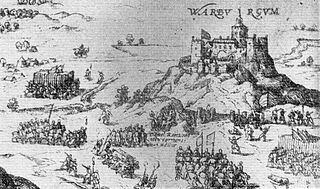 W
WThe Siege of Varberg was a Danish siege of the Swedish-occupied castle of Varberg in Halland, present-day Sweden by Danish forces under the Danish-German general Daniel Rantzau. Rantzau was killed by a Swedish cannonball on 11 November. Danish commander Franz Brockenhuus and Swedish commander Bo Birgersson Grip were also killed in the battle.